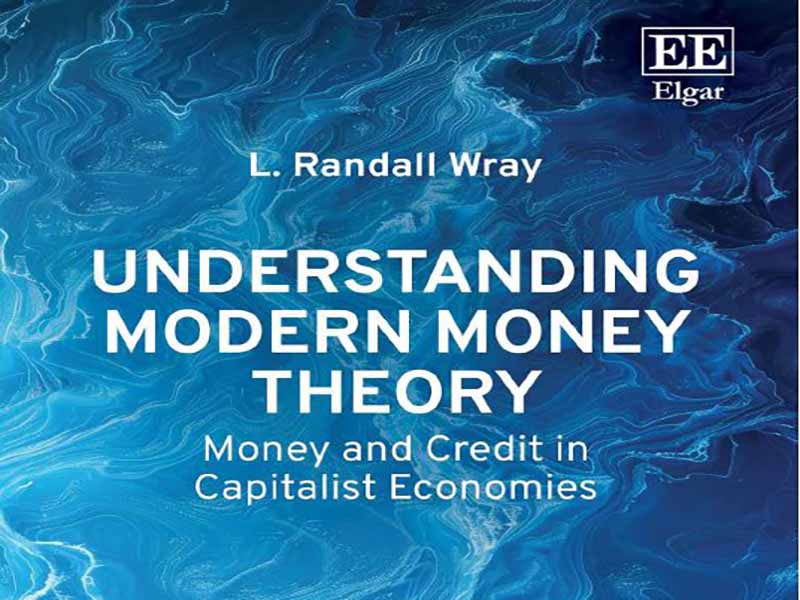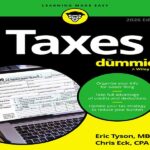- عنوان کتاب: Understanding Modern Money Theory – Money and Credit in Capitalist Economies
- نویسنده: L. Randall Wray
- حوزه: پولی
- سال انتشار: 2025
- تعداد صفحه: 339
- زبان اصلی: انگلیسی
- نوع فایل: pdf
- حجم فایل: 8.28 مگابایت
من کار روی اولین نسخه خطی کتابم را زیر نظر یان کرگل، زمانی که در بورسیه فولبرایت در بولونیا، ایتالیا، در سالهای ۱۹۸۶-۱۹۸۷ بودم، شروع کردم. ادوارد الگار به تازگی شرکت انتشاراتی خود را تأسیس کرده بود و (ظاهراً) از یان پرسید که آیا از نسخههای خطی موجود اطلاعی دارد یا خیر. یان نسخه خطی مرا توصیه کرد و ادوارد ریسک کرد و آن را در سال ۱۹۹۰ با عنوان «پول و اعتبار در اقتصادهای سرمایهداری: رویکرد پول درونزا» منتشر کرد. این کتاب به تفصیل تاریخچه رویکرد پول درونزا را بررسی کرد و نشان داد که نظریه پول برونزا که در آن زمان غالب بود، با ضریب سپرده و کنترل بانک مرکزی بر عرضه پول، یک انحراف بوده است. رویکرد پول درونزا در طول قرن نوزدهم عموماً مورد استقبال قرار گرفته بود و من میخواستم نشان دهم که تسلط رویکرد پول برونزا در نیمه دوم قرن بیستم یک مسیر اشتباه بوده است. علیرغم هشدار هایمن مینسکی به من مبنی بر اجتناب از نوشتن داستان پیدایش ریشههای پول، من به گمانهزنی در مورد این موضوع پرداختم. در بولونیا، با اتو استایگر آشنا شدم که در حال توسعه رویکرد مالکیت خصوصی به پول و بهره بود و ریشههای پول را در وامهای غلات بینالنهرین شناسایی کرد. یان مرا به رساله پول کینز راهنمایی کرد که مرا به نظریه دولت پول ناپ و در نهایت به آنچه کینز دوره جنون بابلی خود نامید، هدایت کرد، زمانی که کشف کرد نام تمام واحدهای اولیه پول از واحدهای اندازهگیری غلات گرفته شده است. از آنجایی که من با مطالعات لوئیس هنری مورگان (1877) در مورد جامعه قبیلهای و ظهور جامعه طبقاتی نیز آشنا بودم، طبیعتاً نسبت به داستان ارتدوکس که ادعا میکرد پول به عنوان واسطهای برای مبادله ایجاد شده تا جایگزین مبادله نامناسب شود، تردید داشتم. با این حال، موضوع اصلی کتاب اول من مربوط به نحوه عملکرد پول در اقتصاد سرمایهداری مدرن بود. من همچنین به طور مفصل به نوآوریهای اخیر در امور مالی، از جمله خطرات استفاده فزاینده از تعهدات خارج از ترازنامه، ظهور اوراق بهادارسازی و رقابت رو به رشد بانکهای غیربانکی (آنچه اکنون بانکهای سایه مینامیم) پرداختم. من هشدار دادم که اگرچه همه این نوآوریها ممکن است به مؤسسات منفرد امکان تغییر ریسک را بدهند، اما کل سیستم را پرخطرتر و احتمال فروپاشی آن را افزایش دادند – دو دهه قبل از بحران مالی جهانی که این اتفاق افتاد. در سال ۱۹۹۷، ادوارد الگار ریسک بسیار بزرگتری را پذیرفت و موافقت کرد که کتاب دوم من، «درک پول مدرن: کلید اشتغال کامل و ثبات قیمتها» (۱۹۹۸) را منتشر کند. تا آن زمان، من ادوارد و سندی الگار و دختران عزیزمان را به خوبی میشناختم، زیرا مرتباً در جلسات دانشگاهی در نمایشگاههای کتاب شرکت میکردیم. هنگام کار روی کتاب جدید، سعی کردم ادوارد را متقاعد کنم که این کتاب نحوه نگاه ما به پول را متحول خواهد کرد – به تعبیری دیگر، آنچه جان مینارد کینز هفت دهه قبل در مورد نظریه عمومی خود گفته بود: «من معتقدم که در حال نوشتن کتابی در مورد نظریه اقتصادی هستم که تا حد زیادی – نه، گمان میکنم، فوراً، بلکه در طول ده سال آینده – نحوه تفکر جهان در مورد مشکلات اقتصادی را متحول خواهد کرد.» علاوه بر این، از او خواستم قیمت آن را ۲۵ دلار تعیین کند و تضمین کردم که به فروش خواهد رسید. آن کتاب، چیزی را که به عنوان نظریه پول مدرن (MMT) شناخته شد، مطرح کرد. اصطلاح «پول مدرن» یک شوخی خودمانی بود که از گفته کینز در رساله گرفته شده بود که نظریه پول دولتی ناپ را برای همه پولها «در چهار هزار سال گذشته» – یعنی دوره مدرن – به کار میبرد. متأسفانه، استقبال کاملاً مثبت نبود! برخی از اقتصاددانان دگراندیش مرا به کنار گذاشتن ایدههای مطرح شده در کتاب اول متهم کردند و اصرار داشتند که رویکرد پول دولتی MMT با نظریه اعتباری پول که توسط رویکرد پول درونزا مطرح میشود، مغایرت دارد. مجلات دانشگاهی دگراندیش عموماً از انتشار آثار علمی در مورد MMT خودداری میکردند. اقتصاددانان ارتدکس MMT را به این ادعا متهم کردند که دولت باید میلیاردها دلار چاپ کند و باعث ابرتورم شود. حمایت MMT از استفاده از تضمین شغل برای تضمین اشتغال کامل به عنوان نوعی کار اجباری رد شد. برای مدت طولانی، سیاستگذاران و کارشناسان رسانهای اصرار داشتند که MMT یک حرف دیوانهوار است و مطمئناً کشور را نابود خواهد کرد. اما وقتی از منتقدان خواسته شد تا در توضیح MMT در مورد نحوهی واقعی خرج کردن دولت یا اینکه چرا MMT ادعا میکند که یک دولت مستقل نمیتواند از پول خود استفاده کند، نقصهایی پیدا کنند، تنها چیزی که به آنها داده شد، جیرجیرک بود. هیچ کس هیچ نقصی در منطق یا توصیف MMT پیدا نکرده است. در دورهی طولانی و کند بهبودی پس از بحران مالی جهانی، MMT با گسترش ایدهها در وبلاگها و اینترنت به طور کلی، پیروان و طرفداران بیشتری پیدا کرد. آنها سیاستمداران را تحت فشار قرار دادند و پرسیدند که چرا دولت از انجام کارهای بیشتر برای کاهش رنج مردم خودداری میکند. با وجود منابع فراوان بیکار، چرا دولت نمیتواند از پول ملی خود استفاده کند؟ پیروان دیگر به رئیس جمهور اوباما وقتی ادعا کرد که دوست دارد کارهای بیشتری انجام دهد، اما دولت پولش تمام شده است، اعتقادی نداشتند. آنها از کارشناسان برجستهای مانند پل کروگمن به دلیل تردید صلحآمیز در حمایت از هزینههای بیشتر انتقاد کردند.
I began working on my first book manuscript under the tutelage of Jan Kregel while on a Fulbright fellowship in Bologna, Italy, in 1986-7. Edward Elgar had just formed his own publishing company and (apparently) asked Jan if he knew of any manuscripts that might be available. Jan recommended mine and Edward took a chance, publishing it in 1990 as Money and Credit in Capitalist Economies: The Endogenous Money Approach. The book explored in detail the history of the endogenous money approach, showing that the then-dominant exogenous money theory with its deposit multiplier and central bank control of the money supply was an aberration. The endogenous money approach had been commonly embraced throughout the 19th century, and I wanted to show that the domination of the exogenous money approach in the second half of the 20th century was a wrong turn. In spite of Hyman Minsky’s warning to me to avoid writing a Genesis story of money’s origins, I did dip into speculation on the topic. While in Bologna, I met Otto Steiger, who was developing a private property approach to money and interest, identifying money’s origins in Mesopotamian loans of grain. Jan directed me to Keynes’s Treatise on Money, which led me to Knapp’s State Theory of Money and finally to what Keynes called his period of Babylonian Madness when he discovered that the names of all the early money units came from measuring units for grain. As I was also familiar with Lewis Henry Morgan’s (1877) studies of tribal society and the rise of class society, I was naturally skeptical of the orthodox story that claimed money originated as a medium of exchange created to replace inconvenient barter. Still, the main topic of my first book concerned how money works in the modern capitalist economy. I also looked in detail at recent innovations in finance, including the dangers of the increasing use of off-balance-sheet commitments, the rise of securitization, and the growing competition from nonbank banks (what we now call shadow banks). I warned that while all these innovations might enable individual institutions to shift risk, they made the system as a whole riskier and more likely to collapse-two decades before the Global Financial Crisis when that came to pass. In 1997, Edward Elgar took a much bigger risk, agreeing to publish my second book, Understanding Modern Money: The Key to Full Employment and Price Stability (1998). By then, I had come to know Edward and Sandy Elgar, and their darling daughters, quite well, as we regularly caught up at the book displays at academic meetings. While working on the new book, I tried to convince Edward it would revolutionize the way we look at money-paraphrasing what John Maynard Keynes had said seven decades earlier about his General Theory: “I believe myself to be writing a book on economic theory which will largely revolutionize-not, I suppose, at once but in the course of the next ten years-the way the world thinks about economic problems.” Further, I asked him to price it at $25 and guaranteed it would sell. That book laid out what became known as Modern Money Theory (MMT). The term “modern money” was an inside joke, taking off from Keynes’s statement in the Treatise that Knapp’s state money theory applied to all money “for the past four thousand years”-i.e. the modern period. Unfortunately, the reception was not entirely positive! Some heterodox economists accused me of abandoning the ideas advanced in the first book, insisting that the state money approach of MMT is inconsistent with the credit theory of money addressed by the endogenous money approach. The heterodox academic journals generally refused to publish scholarly work on MMT. Orthodox economists accused MMT of claiming that the government should print up gazillions of dollars, causing hyperinflation. MMT’s advocacy for using the Job Guarantee to ensure full employment was rejected as some form of forced labor. For a long time, policymakers and media pundits insisted that MMT was crazy talk and certain to destroy the country. But when challenged to find holes in MMT’s explanation of how the government really spends, or why MMT claims that a sovereign government cannot run out of its own currency, all the critics had was crickets. No one has found any holes in MMT’s logic or description. In the long and slow recovery from the Global Financial Crisis, MMT gained followers and proponents as the ideas spread across blogs and the internet more generally. They put pressure on politicians, asking why the government refused to do more to alleviate suffering. With ample unemployed resources, why couldn’t the government use its sovereign currency? Followers no longer believed President Obama when he claimed he’d like to do more, but the government had run out of money. They criticized prominent pundits like Paul Krugman for dovish hesitancy in supporting more spending.
این کتاب را بصورت رایگان از لینک زیر دانلود نمایید.
Download: Understanding Modern Money Theory




































نظرات کاربران